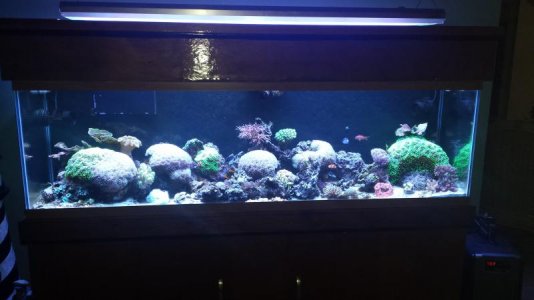Actinic blue has significant output Violet and Blue wavelengths from 400Nm all the way through about 470:

Compare that to a blue plus, which peaks higher in the blue range and extends more toward the cyan:

The Super actinic is Violet only, not blue:

I have found it adds a lot of color without making the whole tank look bluish. When there is too much blue light it starts making other colors look different in my experience, i.e. reds look brownish, yellows look greenish, etc. I use two Super actinic in my 8 bulb sun power an absolutely love it.
EXCELLENT information... Now you really got me thinking... because if the Super Actinic is purple then i will have 2 purples (Super Actinic and Purple +) on the tank which i think is not a good idea.
Overall i will have to give both a try because i was only thinking to chane one of my Blue+ for a Actinic but not sur ewhich one. Any other recommendation will be appreciated.
Once again. Thanks...Here is a pic of my tank...



